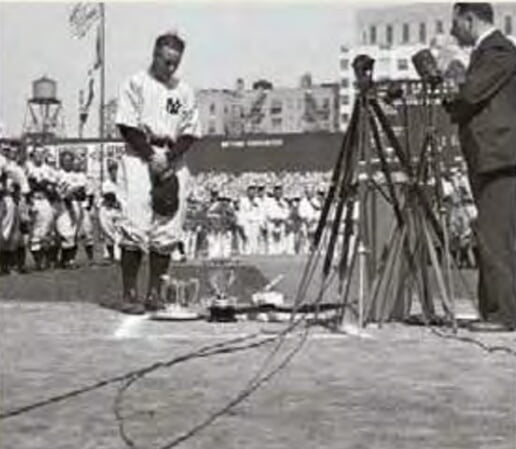THE NERVOUS SYSTEM [ HERE COMES THE BALL ]
The cerebellum, at the rear and bottom of the brain, is a key brain area for practiced, complex motor skills. It maintains the body’s balance during the catch and coordinates with the portions of the cerebral cortex that involve thinking. You may realize, “Here comes the ball,” but little thinking is involved in moving your hand to make the catch if you’ve practiced that motion. Instead, the cerebellum moves the body smoothly and quickly in response to the cortex’s analysis of the sensory stimuli. The movement occurs because somatic motor neurons were prompted to release the neurotransmitter acetylcholine at their synapses in the skeletal muscle fibers. Acetylcholine always excites action rather than suppressing it. Once acetylcholine’s effect reaches a threshold, the fibers of the muscles in the arms and legs contract, moving the hand into position to make the catch. Continuing sensory input from the eyes creates a feedback loop of information between the brain and the hand. The brain continues to make fine motor adjustments as the ball comes near.
Luigi Galvani discovered in the 18th century that nerves use electricity. It was an accident. An aide touched a frog nerve with a scalpel, and its legs contracted. Galvani substituted electric sparks and got the same effect. His name lives as a verb: when sparked into action, we are “galvanized.”
LOU GEHRIG , the “Iron Horse,” played in 2,130 consecutive games for the New York Yankees from 1925 to 1939. In May of his final year as a Yankee, when his batting average dipped to an uncharacteristic .143 and he began feeling inexplicably weak and sluggish, he took himself out of the lineup. He told the manage he thought the club would do better if someone else replaced him at first base. Two months later; GEHRIG knew the reason for his sluggishness. Doctors at the Mayo Clinic diagnosed him as suffering from a degenerative disease of nerve cells in the brain and spinal cord. Two years after that, he was dead.


